Goldilocks Had It Right
Think back to when you were a kid (for some of us easier than others because we never stopped being a kid!). Remember the story “Goldilocks and the Three Bears”? What was the purpose of that well-known folk tale? Now, let’s not see the same hands all the time... OK – you in the back – you say it was to advance the theory that the middle-bowl-of-porridge/chair/bed is the best? One was too hot/big/small while the one on the other end was too cool/small/not-her-size? The middle choice was right most of the time, right? Good, class... you get it. Whether you agree with that theory or not, we will touch on it in the following discussion. Sometimes the middle road is best, and with handgun powders, we’ll explore that notion.It’s Gunpowder, Not A Folktale!
OK, I get it. I simply wanted to use something that would get your attention and then help serve as an introduction to our subject at hand – a quick guide to pistol powders. Our friend Goldilocks will come back in a little while. For now, let’s look at four basic tasks that we accomplish by using handguns.#1 Target Shooting
Either informal or competitive, target shooting is probably the second-most common reason folks pick up a revolver or a pistol today. From paper targets in the backyard to a formal range session, target shooting builds our skills. Trigger control, sight acquisition, grip...there are many ways that simple target shooting hones our skills. Whenever I think of competitive target shooting, the image of a person standing 90 degrees to the target, with a customized 1911 in one hand aimed at a bullseye target 50 yards downrange comes to mind. The off hand will be tucked into the waistband or a pocket. Thus was NRA-sanctioned Bullseye competition from yesteryear. This is the mental image that pops into my mind when I think about competitive target shooting. Of course, there are many other types of targets - especially nowadays with tactical/combat/self-defense and other types of competitions. Somehow that older image from a bygone time sticks with me, even though I shoot the more contemporary target courses at my home range and others. Some visions die hard. Even so, target shooting is very popular.#2 Plinking
Closely related to target shooting, plinking is defined (by me) as shooting at informal or improvised targets in a relaxed setting. Here, we see similar paper targets as mentioned above, along with whatever else you can find to put holes in. (Over-ripe zucchini are great!) This would have to be done on a home or otherwise-unofficial range, as most commercial ranges have pretty strict rules as to what type of target you can ventilate on the premises. And, you should not shoot at glass or any hard surface that could cause the bullet to ricochet... reference, Ralphie in “A Christmas Story”.#3 Hunting
I am in the 1% of deer hunters in my state that hunt with a handgun. There are darn few of us, to be sure, and I don’t know why. If the year was, say, 1960 or so, your choices would be limited as to which handgun and cartridge you could ethically use so I could see the small percentage. The .44 Magnum was introduced to hunters in 1956, and you had the .357 Magnum from 1935 to name a couple of rounds that take deer (Read also: .357 Magnum vs .44 Magnum Comparison). The venerable .45 Colt has always had its proponents. Most laws did not allow handgun hunting until fairly recently, and then only with certain cartridges. But, the cartridge list has expanded from what it was in 1960. If you factor in small-game hunting, then your choices open up. Even so, handgun hunting is still pretty much in the hands of the specialist, someone who practices regularly and is good at getting fairly close to the target critter. With my .243 in hand and a good rest, I’m good to almost 300 yards on deer-sized game, but with my .44 revolver, I’ve limited myself to 100 yards, max. Even with limitations, handgun hunting is still popular among the 1 percent (at least around here).#4 Self-Defense
I mentioned above how that many guns sold are for target shooting...the self-defense role would eclipse the target role in terms of handgun sales, especially in today’s climate. With the current pandemic spreading across the fruited plain, many gun stores have bare shelves due to folks buying guns for personal protection. Without going too far overboard in the self-defense category, we see many, many people buying guns. The problem is getting ammo for the new guns...my nephew and his father-in-law each just two days ago bought new Gen 5 Glock 17s but had to order ammo online – the store was out of 9mm rounds. I would venture a guess that more handguns are sold for personal or family protection today than in any other time period I could think of. The F.B.I.’s record-setting background check numbers are truly eye-opening and proof of record sales. So, we have four basic reasons why people buy handguns. A certain percentage of them will turn to reloading in order to add to their shooting experience. If you learn to “roll your own”, you can get more shots per dollar, especially if you shoot home-cast bullets. For the cost of a pound of powder, primers, bullets and those free brass cases you picked up or otherwise saved, you can make two or three times over the number of cartridges that you could buy from the factory for the same money...in some cases, even more. Let’s look at some possible reloading scenarios and what powder type goes best with each...- Practice loads. If all you want to do is punch holes in targets (either paper or other), you can make very shootable, accurate rounds for as little as 3-4 cents each. (This is if you are using home-cast bullets. If you have to buy cast bullets, it can add a few cents to the cost). A fast-burning powder is called for here.
- Hunting loads. Every deer except for one that I have killed with my long-barreled S&W 629 .44 Magnum has fallen to a bullet that I cast, sized, lubed and loaded. The one exception was a deer I took with a 240-grain JHP .44 Special round from Georgia Arms. My cost-per-round was too low for my non-mathematically-inclined brain to figure. The bullets were accurate, and put the deer down with authority. The bullet in question was a Lee 260-grain semi-wadcutter. Here, a medium-to-slow burning powder works best.
- Self-Defense...uh...I don’t carry reloads for self-defense. Here is where I don’t skimp – I buy the best SD loads I can find. I advise against carrying handloads in your carry gun. Even if you could guarantee 100% reliability, there’s still the liability aspect. Don’t go there.

Pressure Points
What I was trying to explain above was that, in order to keep pressures on the civil side (I’ve blown up guns before from overpressure loads), a fast powder builds to its pressure peak very quickly, while a slow powder tends to spread the pressure arc out over a little bit of time. Here’s a basic diagram...
 Look at the powders. Let’s find their positions on the burn rate chart... if we arrange them in burn rate from fast to slow, we end up with this:
Look at the powders. Let’s find their positions on the burn rate chart... if we arrange them in burn rate from fast to slow, we end up with this:
- Alliant Red Dot: 9
- Hodgdon Titegroup: 18
- Hodgdon HP-38: 39
- Alliant Unique: 45
- Hodgdon Universal: 47
- Accurate Accurate #5: 59
- Hodgdon Long Shot: 74
- Alliant 2400: 76
- Hodgdon H110: 87
FAST POWDERS
 Here we have HP-38, Red Dot and Titegroup. I use these powders for target or practice loads in 9mm, .38 Special, .357 Magnum, .45 ACP, .45 Colt and .44 Special (with light bullets only for the last two). The burn rates are fast, but taking that into account, these powders make for a very economic load. You don’t need much powder to generate enough power to operate a semi-auto's slide, so a light charge of a fast-burning powder is just what the doctor ordered. As was sung in a TV ad from my long-past youth, a little dab’ll do ya. An example: there are 7,000 grains of powder in one pound. If you find a load in a reputable source book that lists 4 grains of powder, you will be able to (theoretically – I always spill some) make 1,750 loads from that one pound. But, if you are loading a slower powder that requires more (I’m thinking of one of Elmer Keith’s favorite loads that required 22 grains of an unnamed powder – don't want you to get into trouble), then you will only get about 319 loads. So, if you are on a budget, stick to faster powders. With powder costing, in some places, $30 per pound, economies enter into it. One powder not shown is Alliant Bullseye, the grand-daddy of light target load powders. I was out of that.
Here we have HP-38, Red Dot and Titegroup. I use these powders for target or practice loads in 9mm, .38 Special, .357 Magnum, .45 ACP, .45 Colt and .44 Special (with light bullets only for the last two). The burn rates are fast, but taking that into account, these powders make for a very economic load. You don’t need much powder to generate enough power to operate a semi-auto's slide, so a light charge of a fast-burning powder is just what the doctor ordered. As was sung in a TV ad from my long-past youth, a little dab’ll do ya. An example: there are 7,000 grains of powder in one pound. If you find a load in a reputable source book that lists 4 grains of powder, you will be able to (theoretically – I always spill some) make 1,750 loads from that one pound. But, if you are loading a slower powder that requires more (I’m thinking of one of Elmer Keith’s favorite loads that required 22 grains of an unnamed powder – don't want you to get into trouble), then you will only get about 319 loads. So, if you are on a budget, stick to faster powders. With powder costing, in some places, $30 per pound, economies enter into it. One powder not shown is Alliant Bullseye, the grand-daddy of light target load powders. I was out of that.
MEDIUM POWDERS

 Here are four of my favorite medium-burning powders. Technically, Long Shot and Accurate #5 have a burn rate a bit slower than the others but I use it in medium-range loads. I load 9mm, .38 Special, .45 ACP, .45 Colt and others with these powders. Typically, a charge weight for, say, a mid-range .357 magnum load may be around 7 grains with Universal, so that should give you an idea of how many loads you’ll get per pound. One of the all-time favorites is Unique – I don’t know how many pounds of that I’ve gone through – but in my locale Alliant powders are non-existent. I’ve learned to substitute their readily-available Hodgdon counterparts, with overall very good results. Univeral is very similar in burn rate to Unique, so I can adapt my older Unique “recipes” for use with Universal. Be careful doing that – you cannot just swap powders that are next to each other on the burn rate charts. You need to work up a load, slowly. I have experimented enough to know what works. I have loaded these powders into mid-level .44 Magnum loads with my cast bullets and have achieved great results. I tend to favor mid-range loads for hunting, as my cast semi-wadcutter bullet will do the job anywhere around 900-1100 f.p.s. In my experience, that same cast bullet moving at 1300 f.p.s. just makes the same hole in the deer a little faster but other than that has no other real advantage for me. Plus, the slower load is easier on me and the gun.
Here are four of my favorite medium-burning powders. Technically, Long Shot and Accurate #5 have a burn rate a bit slower than the others but I use it in medium-range loads. I load 9mm, .38 Special, .45 ACP, .45 Colt and others with these powders. Typically, a charge weight for, say, a mid-range .357 magnum load may be around 7 grains with Universal, so that should give you an idea of how many loads you’ll get per pound. One of the all-time favorites is Unique – I don’t know how many pounds of that I’ve gone through – but in my locale Alliant powders are non-existent. I’ve learned to substitute their readily-available Hodgdon counterparts, with overall very good results. Univeral is very similar in burn rate to Unique, so I can adapt my older Unique “recipes” for use with Universal. Be careful doing that – you cannot just swap powders that are next to each other on the burn rate charts. You need to work up a load, slowly. I have experimented enough to know what works. I have loaded these powders into mid-level .44 Magnum loads with my cast bullets and have achieved great results. I tend to favor mid-range loads for hunting, as my cast semi-wadcutter bullet will do the job anywhere around 900-1100 f.p.s. In my experience, that same cast bullet moving at 1300 f.p.s. just makes the same hole in the deer a little faster but other than that has no other real advantage for me. Plus, the slower load is easier on me and the gun.
SLOW POWDERS
 Here we have two of the kings of the slow-burning pistol powders – Alliant 2400 and Hodgdon H110. These powders, in the right charge weight, can push a bullet out of a long-barreled magnum at astounding velocities. The downside comes in the form of vicious recoil and a battered gun, over time. I remember getting ready for a silhouette shoot (remember those?) back in the ‘80s. I was shooting massive amounts of 2400 powder in my Ruger Super Blackhawk in practice. It was right after the match I attended was over that I noticed a bone protruding from my shooting-hand wrist – it was sticking up. The gun was promptly down-loaded to a more sane level, and the bone went back to where it came from. Now...I know some of you out there like the wrist-thumpers, as I used to. I say more power to you, but as for me, I’m sticking with my mid-range loads. As I said above, I’ve killed many deer with a 1050 f.p.s. heavy cast bullet – they don’t seem to notice the difference. One powder not shown is IMR 4227 – that's good, slow powder for .44 Magnum loads.
Here we have two of the kings of the slow-burning pistol powders – Alliant 2400 and Hodgdon H110. These powders, in the right charge weight, can push a bullet out of a long-barreled magnum at astounding velocities. The downside comes in the form of vicious recoil and a battered gun, over time. I remember getting ready for a silhouette shoot (remember those?) back in the ‘80s. I was shooting massive amounts of 2400 powder in my Ruger Super Blackhawk in practice. It was right after the match I attended was over that I noticed a bone protruding from my shooting-hand wrist – it was sticking up. The gun was promptly down-loaded to a more sane level, and the bone went back to where it came from. Now...I know some of you out there like the wrist-thumpers, as I used to. I say more power to you, but as for me, I’m sticking with my mid-range loads. As I said above, I’ve killed many deer with a 1050 f.p.s. heavy cast bullet – they don’t seem to notice the difference. One powder not shown is IMR 4227 – that's good, slow powder for .44 Magnum loads.
 I will add one more thing to this conversation, though...if you are going to push a bullet to 1300 or so f.p.s., use either a very hard-cast or a jacketed bullet. Leading can become a royal pain with a softer-alloy bullet at those velocities. And, speaking of that, pay attention to your revolver’s cylinder chamber mouths. A bullet making the jump from the cylinder to the barrel may be squeezed down as it enters the forcing cone – just keep them clean. That’s a topic for a different day.
I will add one more thing to this conversation, though...if you are going to push a bullet to 1300 or so f.p.s., use either a very hard-cast or a jacketed bullet. Leading can become a royal pain with a softer-alloy bullet at those velocities. And, speaking of that, pay attention to your revolver’s cylinder chamber mouths. A bullet making the jump from the cylinder to the barrel may be squeezed down as it enters the forcing cone – just keep them clean. That’s a topic for a different day.
Special Offer: Join our private community and get exclusive gun deals, handpicked gear recommendations and updates on law changes, every day!





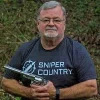
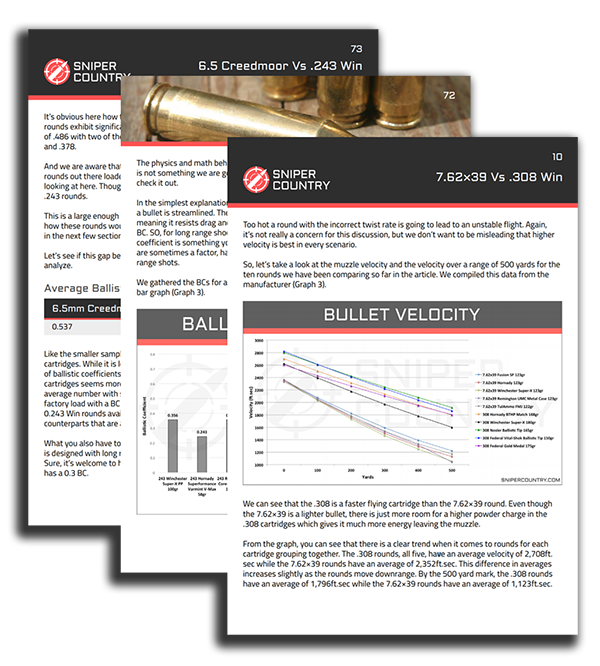

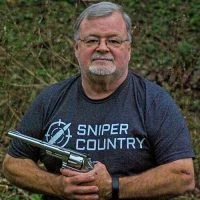




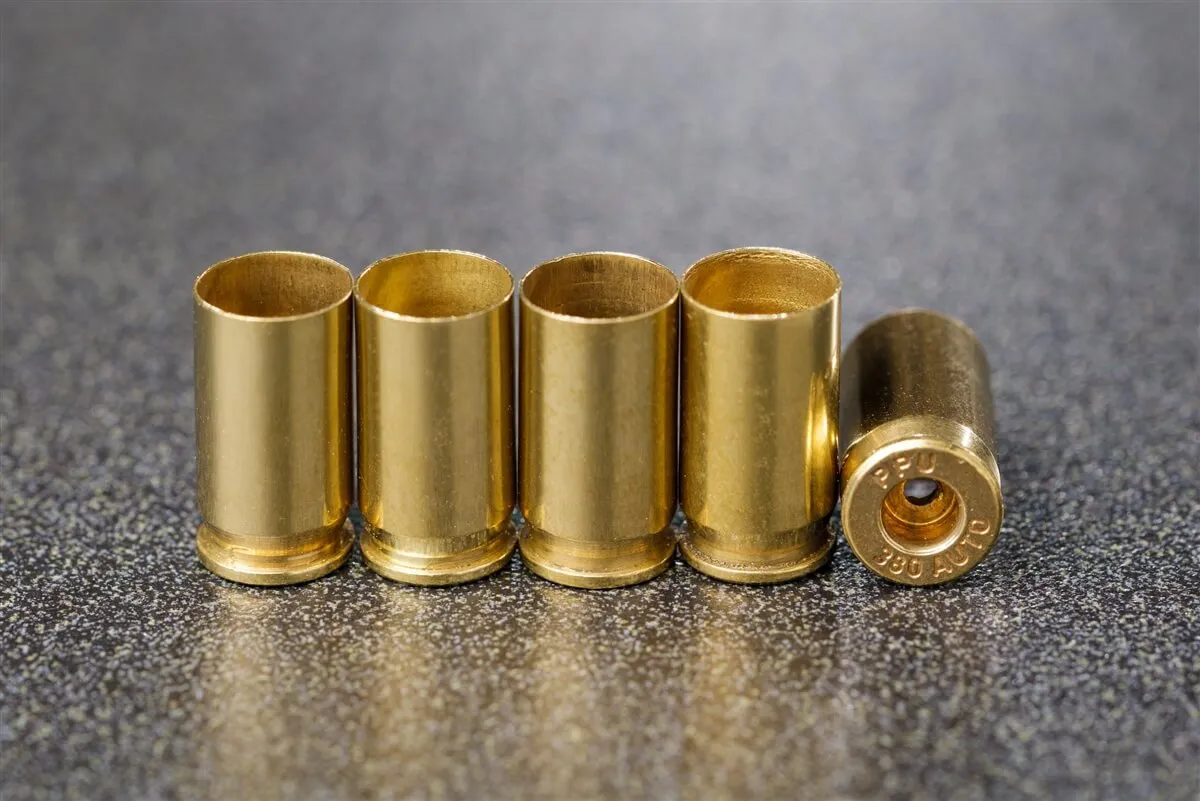
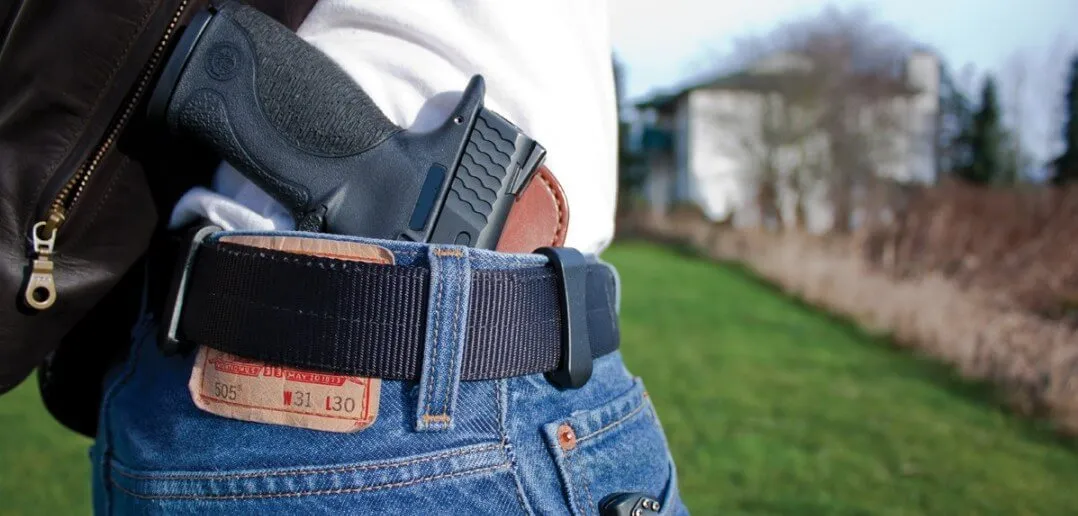
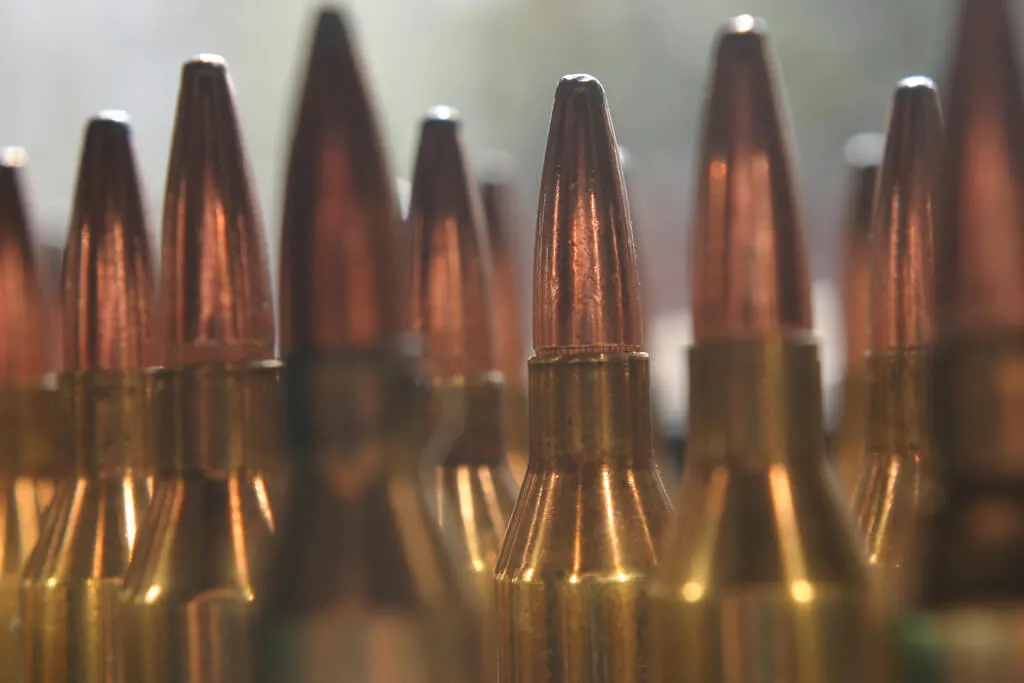
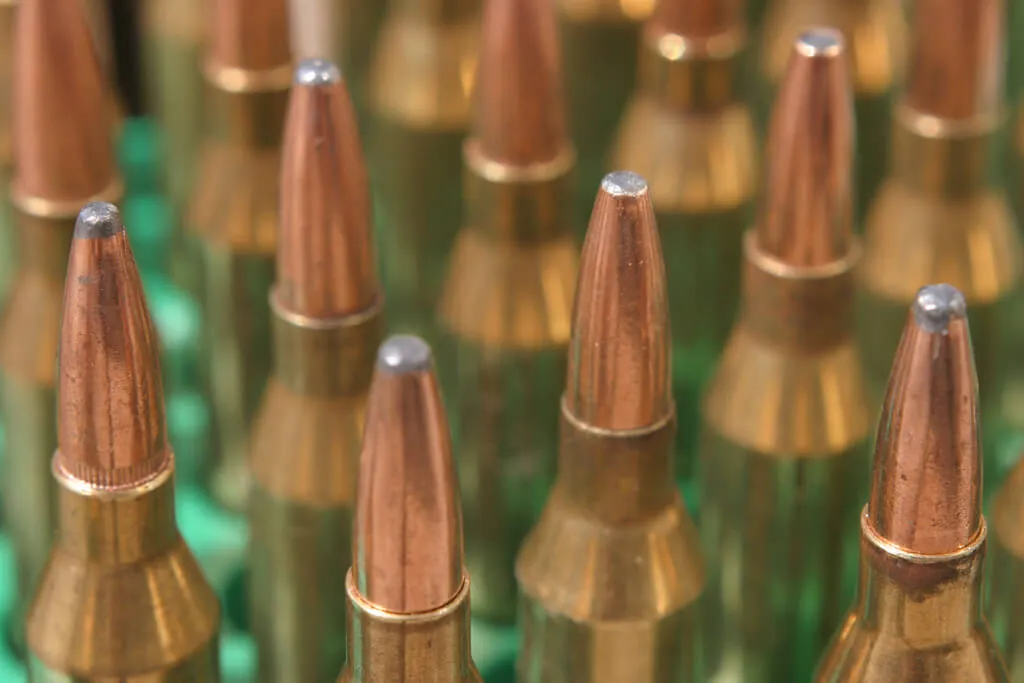
20 Responses
I enjoyed your article very much. I started handloading around the same time I started competitive target shooting. I worked in a gun store with an indoor range, and during slow times, I busied myself putting holes in paper. Our club used three calibers for competition, one being the .22 LR while the other two had to be centerfire, of which one was a pistol, the other a revolver. I shot thousands of rounds every week, and I needed to reload so I could afford it.
Two of my friends were police officers from different departments. Both managed to get full-auto weapons back then in the 70s. One had a Model 1927 Thompson, and the other bought a MAC-10. The two of them decided to buy me a new luxury, carbide dies. We reloaded night after night, then on a Saturday morning load up and go shooting. The guy with the Thompson would not shoot cast bullets but he paid for the store-bought ones. We enjoyed those days.
Your article brought back memories. My reloading never progressed past a “Rockchucker” stage, but I did want a progressive press and never got one. Now if I were to restart loading, I would buy one. And the choices of powder have also improved.
I would add though, that I have never used a reload to go hunting. I have managed to duplicate factory ammo for target shooting but always thought my chances of a misfire were greater with a reload, so all of mine went towards practice.
Thank you very much for bringing me up to date. I don’t get out often anymore. If I did, I would be now spending my quarantine time doing you know what!
Leonard, interesting story. I always like reading about how others got into reloading. You sure had some good times, from the sound of it! Imagine feeding a full-auto gun today, if you could afford it. Those guns are out there, but not cheap with the extra fees you pay. I lean towards Lee turret equipment, but also have the Rockchucker’s dad, the RCBS Jr, press. Lee has a new press out, the Automatic Processing Press (APP)…I’d love to get my hands on that, For a full MSRP of $110 (even cheaper els, you can get this new model going on your reloading bench, And, no, I don’t work for Lee- I’ve just used their stuff for all these years. Thanks for your comments!
It has been more than a few years since my bachelor days. When I was single, we used to set up the press on the dining room table and work from there. I still live in the same condo as I did back then, and the place was usually described as a “mess,” but I did not care. Marriage stopped that.
My wife was never a real “gun person” but she can shoot. At this age, I am not likely to return to my old ways, even though I keep wishing. I still read up on reloading and new guns on the market but at this point, I am not shooting much anymore, and don’t have anybody to shoot with. The “woods” for me is the Florida Everglades, and we are no longer able to get to the places we went to 50 years ago.
I enjoyed your article, and thank you very much for answering me back.
Please remain in good health!
Leonard, thanks for your reply. You never know – you may get a press as a gift or by some other means. Too bad your old shooting haunts are closed – hopefully you’ll find another place to shoot. Also, I appreciate your good wishes-thanks!
Another time, or another place we might have been range buddies. Keep encouraging people.
TY
Thanks, Leonard – I would’ve liked that. I intend to keep writing – appreciate your comment.
Where’s Power Pistol? Very adaptable to most common handgun calibers, ones powder for many.
Bill, that’s one of many I could’ve included – this was just meant to be a quick guide. You are right – it’s a great powder! Thanks for writing.
Great article. I was drawn to the fact that you used Hodgdon Longshot for 9mm. I have had a bottle laying around and have always considered using it for some 9mm 115gn rn. I can’t seem to find any load data for this combination and would truly appreciate your input and possible load data. It seems to me from your article that is should work just fine.
Thanks in advance for any input.
Don, I got my data from an old page of hodgdonreloading.com which they took down a while back. It starts at 5, but out of my guns 4.8 works well. Usually you don’t want to go much under minimum but this load is my go-to load for 9mm and it works, is safe. Your results could vary, so work it up slowly. Hodgdon’s site is full of great loads – check it out. Thanks for writing!
Mike, I meant to get back to you sooner but I gave your 4.8 load a try and you nailed it for me. My 9mm loves it. Less “barky” and a real pleasure to shoot. My son is not so happy as I showed him up a bit. Thanks again.
Don, glad it worked for you. I really like it. Thanks for writing back.
Hi Mike
I ran across sniper country by accident some time back and look forward to your writings. I read them every Sunday night. I have been reloading for just over 40 years. I enjoy reloading as much as shooting itself. Started with 44mag and have expanded to 380,9mm, 10mm, 38/357, 45 auto, 45 colt, 5.56, and 308. Reloading has allowed me to shoot as much as I want. Working up loads, chronographing them, shooting rifles for striving for sub MOA and Pistols or revolvers for hunting, target, plinking, and personal protection is a great hobby. Never saved anything as far as money but the enjoyment and satisfaction cannot be beat. Thank you for enjoyable reading! After finding sniper country I went back and read past articles two. Thank you!
Jeff, I appreciate your comments, truly. Sounds like we have a lot in common. Have you ever tried casting your own bullets? That will expand your satisfaction past reloading, especially if hunt with your own bullets. Thanks for your comments!
Thanks for the information. Just getting started and getting all the info I can before I start trying it out.
Richard, there’s a wealth of info online at the powder, bullet manufacturers’ and reloading equipment maker’s sites. Also, if you have any questions, ask here and myself or someone else will be happy to help. Thanks for writing!
A super good educational article. I shall read every article written by Mike from now on.
Thanks again.
Terry, appreciate the kind words. Thanks for writing!
I recently inherited several rifles and reloading equipment from my father. He showed me When I was much younger, but I never really got into it. I am very interested now and starting to piece it all together. Your article has confirmed what I already was thinking- that Reloading can be economical, fun and make me a better shooter. I think it’s a good way to let my fathers legacy live on too.
Mike, two of the best reasons there is. Your father’s legacy is the most important reason to carry on with his hobby. The fun factor and economics of reloading are side benefits, the way I see it. I lost my dad when I was 8, so we didn’t have a lot of time together. Whatever you can do to keep his memory alive is good – thanks for writing.